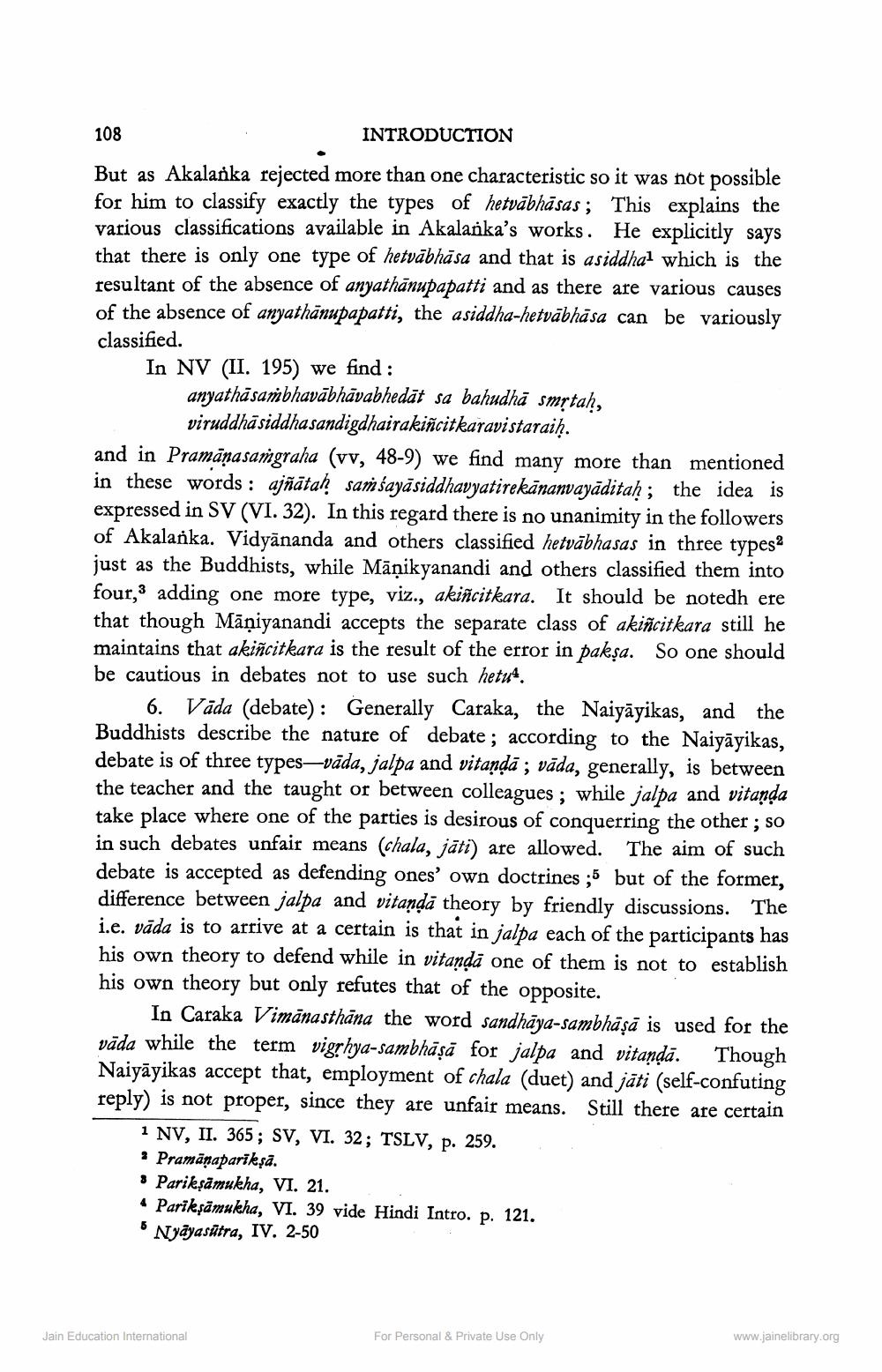________________
108
INTRODUCTION
But as Akalańka rejected more than one characteristic so it was not possible for him to classify exactly the types of hetvābhāsas; This explains the various classifications available in Akalanka's works. He explicitly says that there is only one type of hetvābhāsa and that is asiddhal which is the resultant of the absence of anyathānupapatti and as there are various causes of the absence of anyathānupapatti, the asiddha-hetvābhāsa can be variously classified In NV (II. 195) we find :
anyathā sambhavābhāvabhedāt sa bahudhā smrtah,
viruddhā siddha sandigdhairakiñcitkaravistaraiḥ. and in Pramāṇasamgraha (vv, 48-9) we find many more than mentioned in these words : ajñātaḥ samśayāsiddhavyatirekānanvayāditaḥ; the idea is expressed in SV (VI. 32). In this regard there is no unanimity in the followers of Akalanka. Vidyānanda and others classified hetvābhasas in three types just as the Buddhists, while Māņikyanandi and others classified them into four, adding one more type, viz., akiñcitkara. It should be notedh ere that though Māniyanandi accepts the separate class of akiñcitkara still he maintains that akiñcitkara is the result of the error in pakşa. So one should be cautious in debates not to use such hetu4.
6. Vāda (debate): Generally Caraka, the Naiyāyikas, and the Buddhists describe the nature of debate; according to the Naiyāyikas, debate is of three types—vāda, jalpa and vitandā ; vāda, generally, is between the teacher and the taught or between colleagues ; while jalpa and vitanda take place where one of the parties is desirous of conquerring the other ; so in such debates unfair means (chala, jāti) are allowed. The aim of such debate is accepted as defending ones' own doctrines ;5 but of the former, difference between jalpa and vitanda theory by friendly discussions. The i.e. vāda is to arrive at a certain is that in jalpa each of the participants has his own theory to defend while in vitanda one of them is not to establish his own theory but only refutes that of the opposite.
In Caraka Vimānasthāna the word sandhāya-sambhāṣā is used for the vāda while the term vigrhya-sambhāşă for jalpa and vitanda. Though Naiyāyikas accept that, employment of chala (duet) and jāti (self-confuting reply) is not proper, since they are unfair means. Still there are certain
1 NV, II. 365 ; SV, VI. 32; TSLV, p. 259. * Pramānapariksa.
Pariksämukha, VI. 21. 4 Pariksämukha, VI. 39 vide Hindi Intro. p. 121.
Nyāyasútra, IV. 2-50
For Personal & Private Use Only
www.jainelibrary.org
Jain Education International




